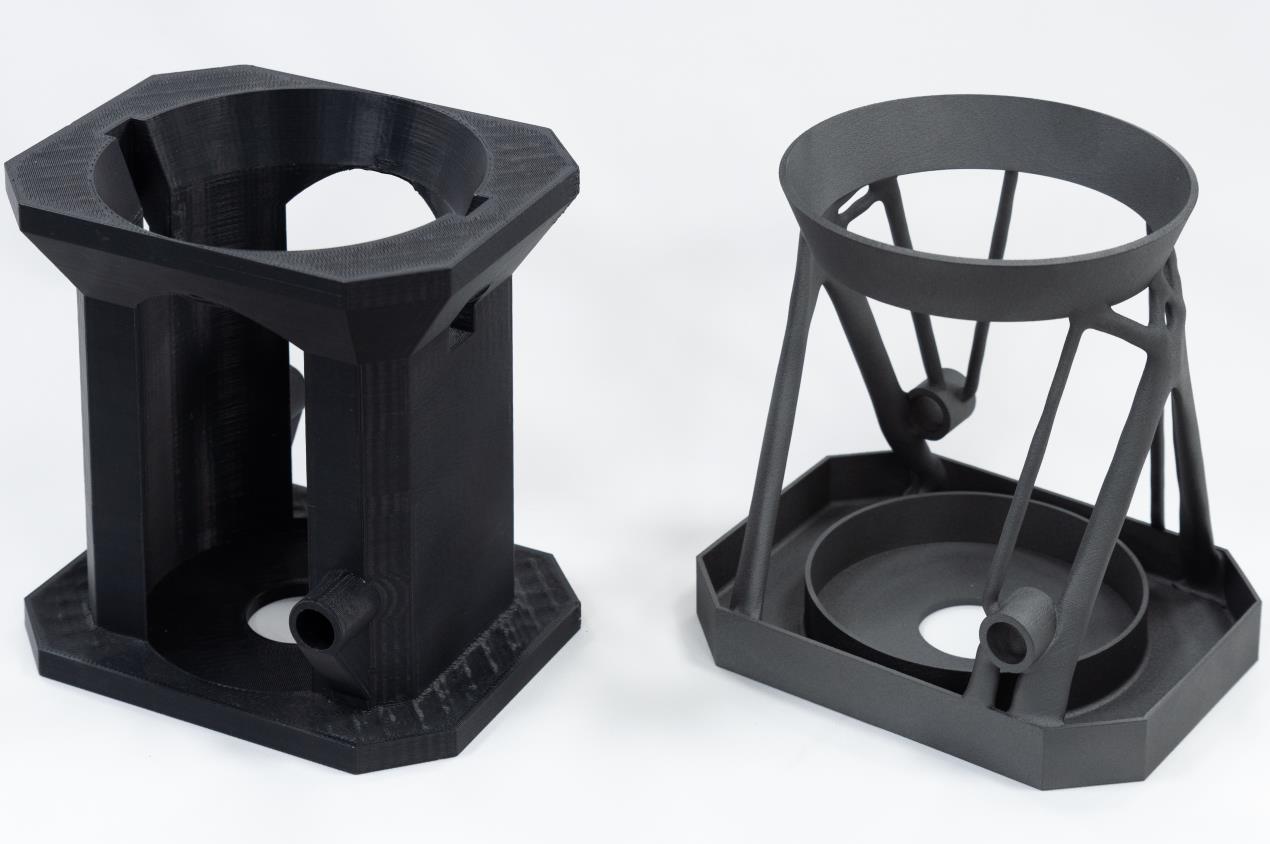UK-based Ricoh 3D has added generative design and shape optimization software to their line of 3D printing services.
Currently, Ricoh 3D offers external printers and in-house printing and design (both Multi Jet Fusion and laser sintering). According to Ricoh Senior Design engineer Richard Minifie, many of the prototypes that pass through their in-house print lab aren’t optimized for 3D printing.
“We see endless parts being produced for additive manufacturing that are still designed as though they are being applied to traditional manufacturing methods,” said Minifie. “Very often those who have worked with traditional methods all their lives do not fully understand how AM can completely remove old design constraints.”
Generative design and shape optimization software are two ways to help develop designs outside of these older constraints. They both build off Finite Element Analysis (FEA) simulation, which generates design concepts that work within performance or material limits. In the world of 3D printing, FEA is used to optimize everything from tissue engineering experiments to micropumps to miniature satellites. The difference between the two is that generative design software automatically removes material after the FEA process, whereas shape optimization lets the user remove material manually afterwards. Simply put, both processes give the designer more possibilities to work with, and can help create a better product.

A toner bottle puck designed with Ricoh 3D’s new FEA-based services (right) to use less material. (Image via Ricoh).
In their statement on the new products, Ricoh 3D emphasized the cost and weight savings that FEA-related software can help with. In-house, their optimization services have helped them redesign an orthotic lever for a local hospital, with a 60 percent weight reduction and 15 percent cost savings. They’ve also used optimization to improve their own factories, redesigning a jig tool in their Quality Assurance process, and designing a more efficient bottle puck for use in the toner line at their factory in Telford, England. They have not yet installed the improved bottle pucks, but they expect the savings to be significant, since the Telford factory delivers 25,000 toner bottles per day.
“Businesses that are looking to use 3D printing as a final production method should be considering optimization as part of their design process – not least to create the fascinating shapes that are possible, but also for impressive operating cost savings,” says Minifie. “We invite anyone to challenge us to see what gains are possible for your products using this technology.”
Subscribe to Our Email Newsletter
Stay up-to-date on all the latest news from the 3D printing industry and receive information and offers from third party vendors.
You May Also Like
Further Understanding of 3D Printing Design at ADDITIV Design World
ADDITIV is back once again! This time, the virtual platform for additive manufacturing will be holding the first-ever edition of ADDITIV Design World on May 23rd from 9:00 AM –...
3D Printer Maker EVO-tech Reborn as NEVO3D — Once More With Feeling
EVO-tech was a 3D printing service and original equipment manufacturer established in 2013 and based in Schörfling am Attersee, Austria. The company produced high-quality material extrusion systems featuring linear bearings,...
3D Systems Brings 3D Printed PEEK Cranial Implant to the U.S. with FDA Clearance
For more than 10 years, 3D Systems (NYSE:DDD) has worked hand-in-hand with surgeons to plan over 150,000 patient-specific cases, and develop more than two million instruments and implants from its...
CDFAM Returns to Berlin for Second Annual Symposium
The second CDFAM Computational Design Symposium is scheduled for May 7-8, 2024, in Berlin, and will convene leading experts in computational design across all scales. Building upon the first event...































